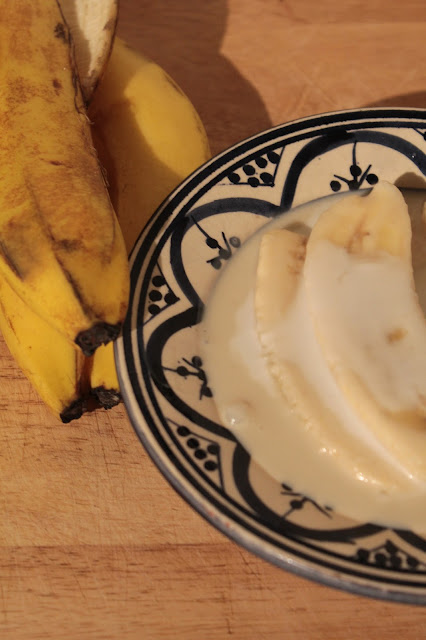Hi there everyone, firstly I hope you've had a lovely Christmas and/or some time off to relax and spend with friends and family. Let me start by apologising for my absence. I would love to say I've been having wild parties and gorging on food for the last 10 days or so but that isn't the case; in fact Christmas more or less has been thrown out of the window this year. I've been incredibly sick with a clostridium difficile infection, which developed after a course of antibiotics. I'm not home and dry yet but after a week of being rather poorly, I am starting to feel more human and am eating again. I'm also currently banned from the kitchen while infectious and on a very light diet; although am trying some Khao Man Gai (fatty chicken rice) tonight.
What with the floods/clean ups and power cuts and now this horrible bug it feels like I've been away for long enough, so it's high time to get blogging again.
This is a recipe I made a couple of weeks back that was planned during the time we had the floods; remember the swordfish I had to throw away? The week after, I bought some less expensive, but delicious steaks of hake and finally made the curry I had planned; Gaeng Taipo Pla.
It reminded me of some of the dishes we ate while we were in Malaysia in the summer, there's certainly a lot of common ingredients. It's a nice easy one to do and if you're sick of turkey and meat right now as a lot of us are after the Christmas festivities, it's a great dish- hot, sour, pungent and healthy with lots of crunchy morning glory.
For two people use:
- Two fish steaks (I used hake but any firm fish will work well)
- A very big handful of morning glory, trim off ends then cut into inch long pieces
- 200ml or 1/2 a can of coconut milk + water to make up to 400ml
- 75ml of tamarind concentrate
- A level tablespoon of red curry paste (I use Mae Ploy brand)
- A big splash of fish sauce
- A walnut sized chunk of palm sugar/ light brown sugar
- Juice of a large lime
- A few lime leaves, ripped up into small pieces
Heat the coconut milk in a wok over a reasonably high heat, gently stirring every now and again until the oils begin to separate from the coconut milk. When they do, add in the red curry paste and fry until well mixed, fragrant and the red oils can be seen. Now pop in the fish sauce, tamarind, sugar and lime leaves along with the additional 200ml water. After all are well mixed, gently pop in the fish steaks and let them slowly cook in the sauce, carefully turning over if needed after a few minutes to allow the fish to cook fully.
When you are happy the fish is cooked, use a slotted spoon or fish slice to carefully lift the fish out and put briefly to one side. Back to the pan of bubbling curry, add in the lime juice and morning glory, stirring well, cooking for only a minute or so until the morning glory is just wilted.
Serve the curry with a fish steak on top along with freshly cooked white rice.




































